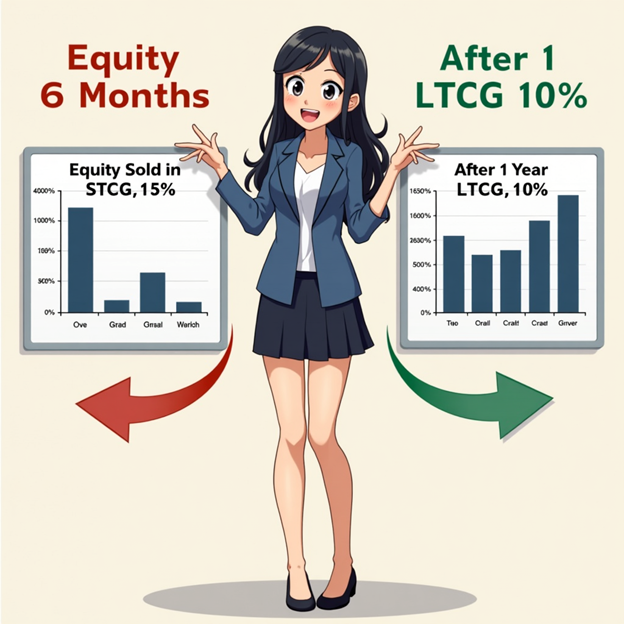There are no items in your cart
Add More
Add More
| Item Details | Price | ||
|---|---|---|---|
Understand how equity mutual funds are taxed in India. Learn the difference between STCG and LTCG, and how to plan your redemptions smartly.
01/07/2025
Equity mutual funds can deliver great returns over time — but don’t forget the tax bite. Whether you redeem your investments after 6 months or 3 years, the tax treatment can significantly impact your net returns. That’s why it’s crucial to understand the difference between Short-Term Capital Gains (STCG) and Long-Term Capital Gains (LTCG) in equity funds.

STCG vs. LTCG in Equity Funds
To qualify as an equity fund, at least 65% of the portfolio must be invested in Indian equities.
| Holding Period | Tax Type | Tax Rate |
| Less than 12 months | STCG | 15% |
| More than 12 months | LTCG | 10% (above ₹1L) |
Real-Life Example: Tarun’s Equity Redemption Tarun invested ₹2,00,000 in a Flexi Cap Fund in April 2022 and sold it in May 2023 for ₹2,50,000.
Knowing tax rules helps you retain more of your returns. With basic planning, you can save thousands and make better exit decisions.
Talk to your advisor before redeeming — a few weeks of patience could reduce your tax bill substantially.

Summary Table: Equity Fund Taxation
| Type of Gain | Holding Period | Tax Rate | Exemption |
| Short-Term (STCG) | < 12 months | 15% | None |
| Long-Term (LTCG) | > 12 months | 10% | First ₹1L gain per FY is tax-free |

Dr. Satish Vadapalli
Research Analyst